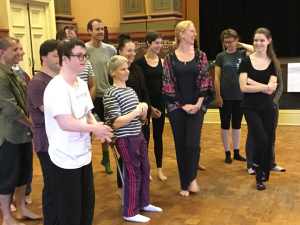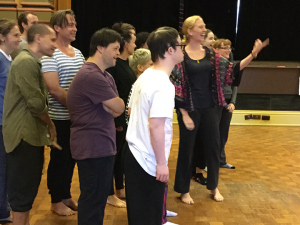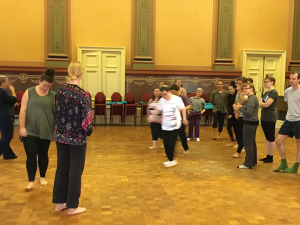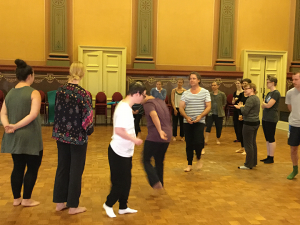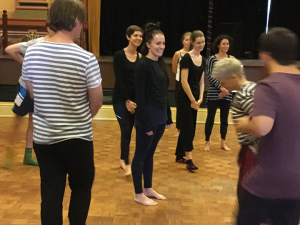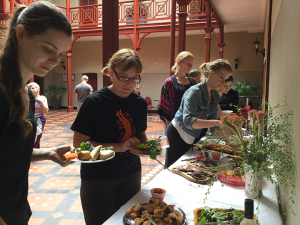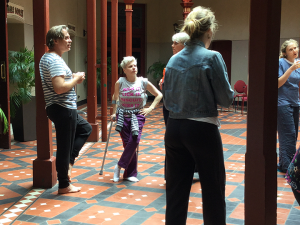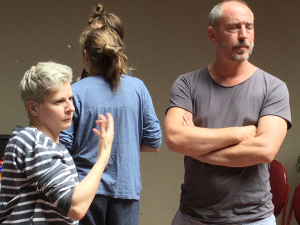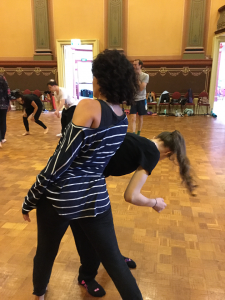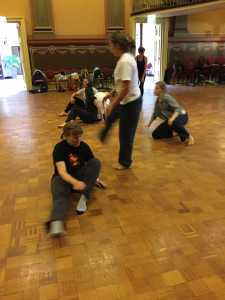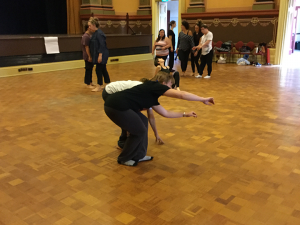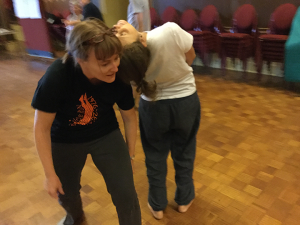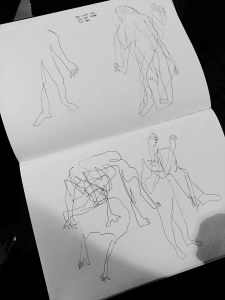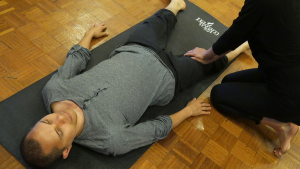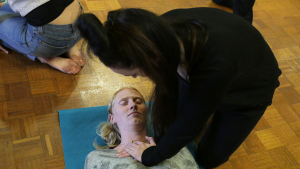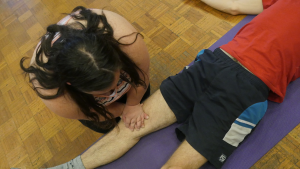Glasgow-based performer and choreographer Claire Cunningham is Artist in Residence at PIAF 2016.
Questions to self
What do I want the participants to get from the time?
Connection – to each other. Friendships. Trust. Possible collaborations and allies for the future. Realization they are not alone. New ideas to try, ways of thinking about performing, noticing and language.
What do I bring?
Time. Taking time. Permission to take time. Permission to look and be looked at.
Permission to be listened to. Giving them permission to speak, to give voice, to say ‘that’s enough’, to communicate.
Permission to do less.
Permission to ask.
Permission to try things
What is my offering to the group?
A space to share knowledge and experience, to learn about each other and each others work.
To share the things I love, the tasks that have made me think, made me squirm, made me know that I needed to do them again because they made me uncomfortable. The exercises that made me notice – my habits, the way I move, the way I think about moving, the way I think about my body, the language I use, the importance of language.
Connections to others who have shaped me
Bill Shannon/ Jess Curtis/Sara Shelton Mann/ Gail Sneddon/Richard Layzell, Meg Stuart/Luke Pell
Tools they have given me
What are they looking for? (based on their cover letters)
New methods/tools/concepts for creating and devising
Different ways to work. To work with difference
Connection to other artists/time with each other
Conversations and questioning of what it is to perform
Ways to investigate own and others individuality


